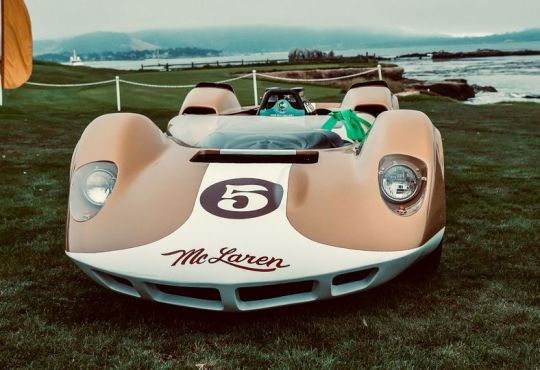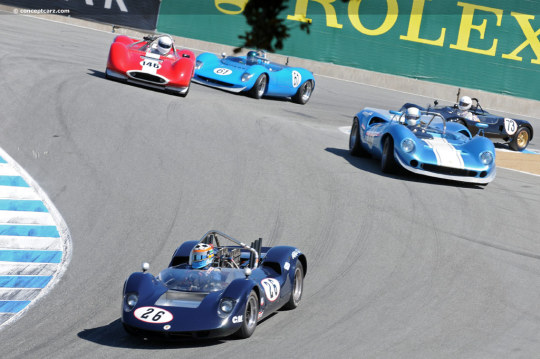#McLaren M1A
Text





Nichols N1A, 2023. A project by a former McLaren designer to create a Can‑Am inspired road car styled after the McLaren M1A, the first sportscar designed and built by Bruce McLaren’s racing team. An initial run of 17 launch-spec cars will feature a dry-sump 7.0-litre-develop of the GM LS3. These new blocks have been bored out to their new 427ci capacity with steel liners and upgraded pistons, producing around 660PS. Each of these engines will be built by Langford Performance Engineering, a company that has produced F1 engines. All models will come with a six-speed manual gearbox. The graphene-infused carbon-fibre bodywork covering an aluminium and carbon-fibre chassis means very light 900kg weight and a 710PS per tonne power-to-weight ratio. Prices have yet to be confirmed but are said to be in the region of £450,000
#Nichols#Nichols N1A#McLaren M1A#replica#sports car#mid-engine#LS3 V8#427ci V8#lightweight#retro style#Can-Am#prototype#new cars
305 notes
·
View notes
Photo

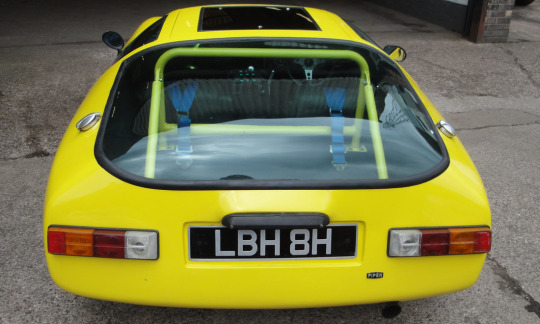

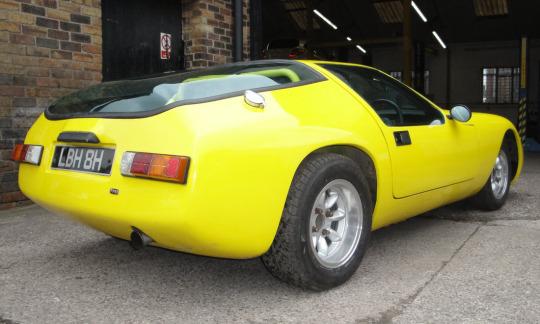




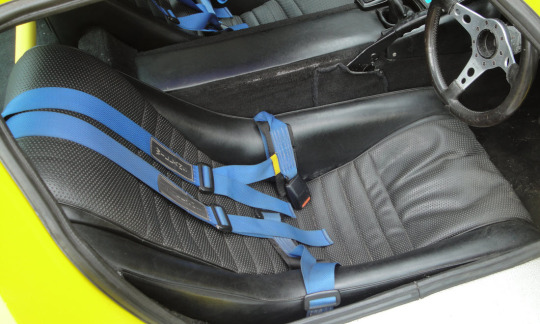

Piper GTT
Before the dominance of the big conglomerate car manufacturers took hold in the late 1960s, there was room in the market for niche companies whose products fulfilled the demands of a few drivers who wanted something a little different to the everyday, somewhat bland mainstream offering. Some companies such as Lotus thrived and are still with us while the likes of TVR have come and gone (several times), hopefully to return. Others had their day in the sun but ultimately disappeared after a relatively brief but bright life; Piper sits firmly in the later camp. Though the end results were fairly diverse, these companies’ approaches had remarkable commonality with cheap to produce fiberglass bodies (no need for expensive tooling which required high production volumes to amortise its costs) sitting on bespoke chassis while their running gear, which was financially impossible for a small business to develop and manufacture, was sourced from the industry’s major players.
Piper were kept pretty busy trying to build cars so production records are sketchy to say the least and it is thought that just eighty road cars and some twenty racers were built making them rare beasts today, though their survival rate is undoubtedly higher than that of propriety sports car such as say MGBs.
Formed in 1966 by ex-racer George Henrotte, owner of Campbell’s Garage (hence the Scottish Piper logo and company name) in Hayes, Kent with the able assistance of engineer Bob Gayler (ex Harry Weslake), machinist Ken Packham and artist come designer Tony Hilder who had been responsible for the McLaren M1A, their first ‘whole car’ effort started as an evenings and weekends project until a customer, Gerry Hall, showed an interest in buying one. With his role as Works Gemini Formula Junior team manager winding up, Henrotte gave the green light for a limited production run of the pretty sports racers with four being completed for customers to add their powertrain of choice to; Hall put an Alfa Twin Cam in his, Bobby Bell a Lotus Twin Cam while racer Jerry Titus opted for a Buick V8. With a Mallite (balsawood/alloy sandwich) monocoque F3 car another Piper product, the company was building a reputation as a hotbed of outside the box thinking and a road-usable GT car was the next project. Approached by some Austin Healey Sprite racers who were looking for a light and sleek home for their running gear, a mock-up of what was to become the Piper GTT was shown at the 1967 Racing Car Show, apparently yielding an impressive seven hundred enquiries.
With Henrotte being kept busy with the tuning side of the Piper business, there was a timely intervention by Clubman racer Brian Sherwood who had not only bought a Piper GT but as the Sprite guys gradually fell by the wayside, was instrumental in more suitable Ford components being introduced at the expense of the BMC kit. With Sherwood now very much hands on, the Company was split with car production moving to his Wokingham premises while Henrotte concentrated on the aftermarket components business, though the companies remained closely linked both financially and practically. Through the late 1960s production increased from a drip to a trickle until Bill Atkinson, an enthusiastic GTT owner who had joined the company in the summer of 1969 as Works Manager, and Tony Waller (Sherwood Holdings’ Company Secretary) made great strides getting the GTT into some sort of series production.
Instrumental in saving Piper’s car business, Sherwood was at heart a racer and he took them on an ultimately ill-fated foray to Le Mans in 1969 with the ultra-low, mid-engined GTR, an ambitious project that is thought to have cost £250,000. His untimely death late that year coupled with strikes at Ford ultimately resulted in the company being wound up in June 1971, despite the strong progress being made by Atkinson and Waller on the car production and development front (the longer wheelbase P2 was eventually launched in early 1971). However, this was not quite the end of the road for Piper; reborn as Emmbrook Engineering under the same management team, the Piper P2 remained in production until 1974.
38 notes
·
View notes
Text

Bruce observing the work in progress on the McLaren Elva M1A // 1964.
#he's my sweetheart. he's my bby girl.#look at him please he's just so smoll help#bruce mclaren#🧡💞💖💗#motorsport#60s
17 notes
·
View notes
Text


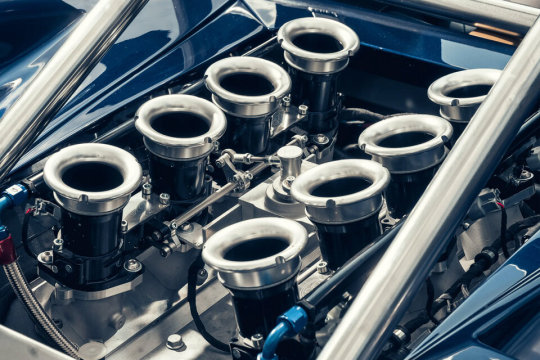



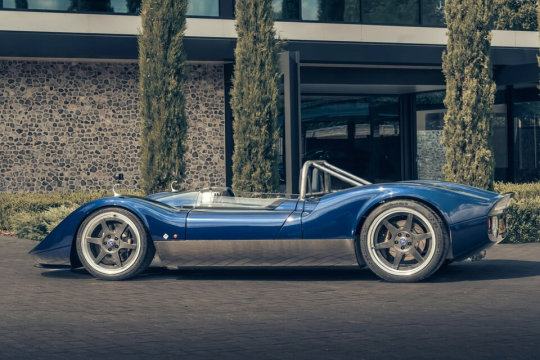
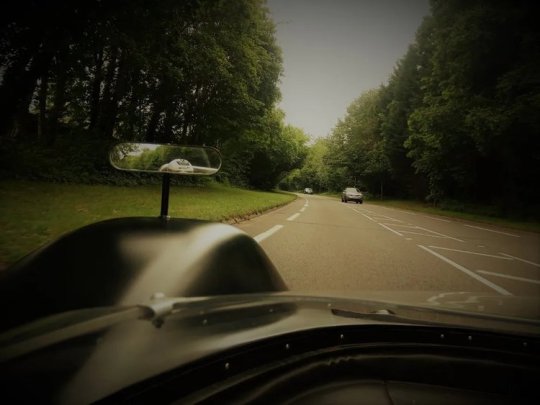
Nichols N1A Roadster
Steve Nichols hizo carrera en la Fórmula 1, diseñando los exitosos McLaren MP4/3 y MP4/4, uno de los autos de carreras más dominantes en la historia y el vehículo que le otorgó al legendario corredor Ayrton Senna el primero de sus tres Campeonatos del Mundo.
Nichols se retiró de la F1 en 2002, pero su deseo de competir no se apagó. Aunque se mantuvo ocupado en el mundo de las carreras vintage a lo largo de los años, Nichols ha vuelto al diseño con el N1A, un automóvil deportivo que se inspira en el McLaren M1A de la década de 1960. El NA1 utiliza un chasis de fibra de carbono y aluminio envuelto en una carrocería de fibra de carbono infundida con grafeno, que captura las curvas fluidas del M1A.
Un motor V8 LS3 especialmente diseñado, con una potencia de 650 caballos de fuerza, se encuentra en la parte central trasera e impulsa las ruedas traseras a través de una transmisión Graziano.
Nichols planea fabricar solo 100 ejemplares del N1A, incluyendo una edición de lanzamiento de mayor especificación con tan solo 15 unidades disponibles.
1 note
·
View note
Text
Nichols N1A 2024 - La vraie joie d'avoir le contrôle sur la route

La Nichols N1A 2024, conçu par l'ingénieur du sport automobile Steve Nichols, offre une expérience de conduite immersive.
Nichols Cars est fier de présenter la N1A, une supercar britannique prête pour la production qui rend hommage à la légendaire McLaren M1A. Conçue par le célèbre ingénieur du sport automobile Steve Nichols, la N1A est une voiture de sport légère à propulsion arrière qui offre une expérience de conduite immersive et exaltante. Craquez pour son design intemporel et son puissant moteur V8 atmosphérique.


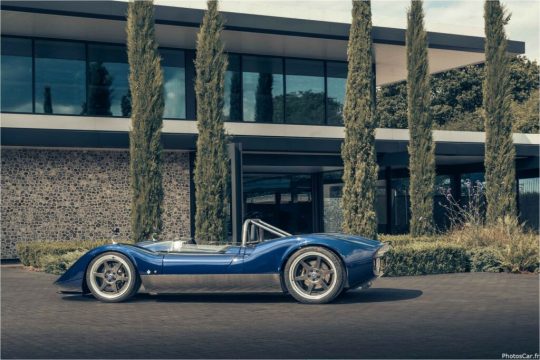




Nichols N1A - Une vision devenue réalité
Fondée en 2017 par Steve Nichols et le PDG John Minnette, la mission de Nichols Cars était de créer la voiture ultime qui inspire la joie et l'excitation. La N1A présente une ingénierie de précision et une apparence attrayante, attirant les passionnés de voitures du monde entier. Explorons le parcours vers une spécification de déploiement prête pour la production pour N1A.
S'inspirer des légendes de la course : les McLaren M1A et MP4/4
Le design de la N1A est inspiré de la légendaire McLaren M1A! une voiture de course légère à moteur central ouvert connue pour son incroyable rapport puissance/poids. La célébrité de la F1, Steve Nichols, s'est inspirée de sa propre expérience de course! notamment de la légendaire McLaren MP4/4 qui a aidé Ayrton Senna à remporter son premier championnat des pilotes.
Nichols N1A : extérieur
Le corps du N1A est fabriqué à partir de fibre de carbone riche en graphène de qualité Formule 1 pour un équilibre entre esthétique et aérodynamique. Méticuleusement conçue, la N1A est une interprétation moderne de la N1A classique et établit une nouvelle norme pour les voitures de sport britanniques.
Cockpit de course immersif : dans le N1A
Entrez dans le N1A et vous découvrirez un cockpit inspiré de la course qui allie raffinement et sophistication. Des cuirs, des tissus et des composants en aluminium usinés haut de gamme et luxueux améliorent votre expérience de conduite. Une position assise entièrement inclinable rappelant celle du MP4/4 permet aux conducteurs de revivre l'âge d'or du sport automobile.
Libérer la puissance : le cœur de N1A
Au cœur de la N1A haut de gamme se trouve un moteur V8 tout alliage de 7,0 litres développé par Nichols Cars. Doté de fonctionnalités améliorant les performances! cet impressionnant groupe motopropulseur développe une énorme puissance de 650 chevaux et offre un incroyable rapport puissance / poids.
Ingénierie de précision : Châssis N1A
Des décennies d'expérience et d'expertise ont été mises dans le châssis N1A pour offrir une expérience de conduite inoubliable. Avec des freins inspirés du sport automobile et une direction précise! le N1A vous connecte à la route et transforme chaque trajet en une aventure pleine d'adrénaline.
Exclusivité et production limitée
La série de démarrage N1A comprend une édition limitée de 15 versions haut de gamme commémorant le triomphe du MP4/4. La production totale du modèle N1A ne dépassera pas 100 unités, garantissant l'exclusivité aux passionnés de voitures exigeants. Source
Read the full article
0 notes
Photo




What a difference 56 years makes juxtaposition of McLaren Elva M1A Mk I, 1964 and McLaren Elva M1A Theme by MSO, 2020. McLaren Special Operations have revealed a Elva liveried to mimic the original Elva M1A raced by Bruce McLaren which was the fastest car on track at the Canadian Grand Prix in 1964, repeatedly smashing the lap record at Mosport Park.
#McLaren#MSO#McLaren Elva M1A#McLaren Elva M1A Theme#McLaren Elva#1964#2020#race car#track car#what a difference#open roof#McLaren Special Operations
202 notes
·
View notes
Photo




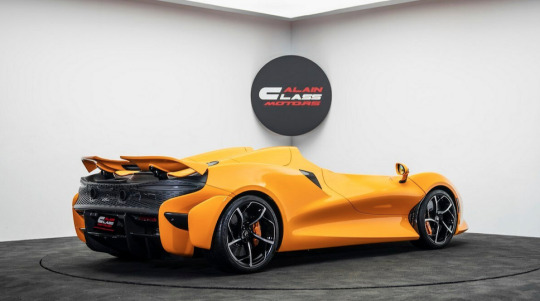



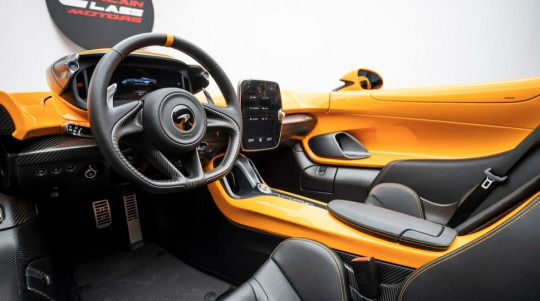

McLaren Elva
A car that needs no destination. Or racetrack. Created to deliver nothing but the purest possible driving experience. Uncompromised pleasure. The McLaren Elva… born to heighten every sense and build the closest connection between driver, car and the elements. Impossibly light. Intoxicatingly powerful. Split-second agility.The Elva pushes our daring design language forward. And proudly embraces the principles set down by Bruce McLaren’s original race-conquering open-top sports cars of the 1960s – the M1A, M1B and M1C. Just like our latest Ultimate Series, the original road-going ‘Elvas’ were lightweight, open-roofed, mid-engined… and single-mindedly created to deliver a driving experience of exhilarating purity.The Elva takes you to the razor-edge of driver engagement. Nothing connects you more closely to the thrill. The view forward is always epic… there is no roof or windscreen to get in the way. The feeling of space and blurring scenery won’t be forgotten. The Active Air Management System doesn’t let turbulence spoil the moment either. This is the most agile McLaren yet. Responses and feedback raise the game to a whole new level. And fully harness the ferocious potential of a 4.0L Twin-turbocharged V8 with 815PS with 800NM of torque – thundering its richer soundtrack into the cockpit thanks to the bespoke quad exhaust system. This almost supernatural agility is also down to Proactive Chassis Control II, which delivers sublime handling on the road or track. Electro-hydraulic steering is full of feel and adds to the intense sense of connection. So does the unique suspension with bespoke tuning. Sintered Carbon Ceramic brakes provide mind-bending stopping power.
29 notes
·
View notes
Photo






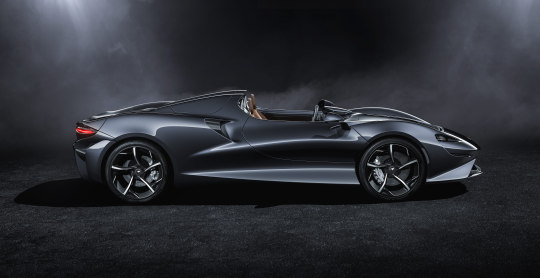
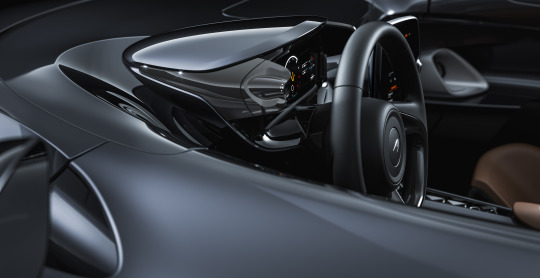
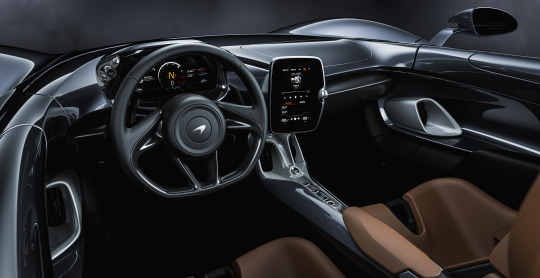
First Look: The New McLaren Elva
McLaren Automotive has revealed its new Ultimate Series roadster, the McLaren Elva. As the brand’s first open-cockpit road car, the Elva adds a new dimension to the range-topping Ultimate Series lineage. Like its McLaren P1TM, McLaren Senna and Speedtail predecessors, volume of the new McLaren Elva will be strictly limited: just 399 are being offered for customer order.
The Elva name celebrates the renowned Bruce McLaren-designed M1A and McLaren-Elva M1A [Mk I], M1B [Mk II] and M1C [Mk III] of the 1960s. Produced as ‘customer’ versions of the innovative & exciting Group 7 McLaren race cars, the McLaren-Elva cars embodied many of the pioneering design & engineering principles that are integral to the McLaren road cars produced today.
The new McLaren Elva is a ferociously fast open-cockpit car; an extreme two-seater with a bespoke carbon fibre chassis and body but no roof, no windscreen and no side windows. With every sensory input heightened, this is a car that exists to provide unparalleled driving pleasure on road or track.
A 4.0-liter, twin-turbocharged McLaren V8 from the same family of engines that powers the McLaren Senna and Senna GTR combines with the lightest vehicle weight of any road car produced by McLaren Automotive to give the superlight new Ultimate Series roadster truly breathtaking performance across the board, with extraordinary levels of acceleration, agility and driver feedback.
The appearance of the McLaren Elva is as striking and unique as the driving experience. The low nose and pronounced front fender peaks provide visual drama and at the same time enhance forward vision. Large, carbon fiber rear fenders flow from the front of the door to the rear deck, while the height of the twin rear buttresses is minimized by using a deployable roll-over protection system.
Helmets can be worn if preferred, but the form and sculpture of the upper cabin wraps around the driver and passenger to provide a secure environment. A fixed windscreen derivative of the car is also available for most markets as a factory option.
Customer deliveries of the McLaren Elva are scheduled to begin towards the end of 2020.
#McLaren Elva#first look#mclaren#cars#hypercars#british#britain#convertibles#open top#200#news#roadsters
71 notes
·
View notes
Text

10.10.1964 Bruce McLaren scored Team McLaren's first race victory, winning the qualifying race at the LA Times GP at Riverside in a McLaren M1A.
10 notes
·
View notes
Photo

McLaren Elva with McLaren Elva M1A Mk I
13 notes
·
View notes
Text
McLaren M1A

Tonight's sketch a day submission: the McLaren M1A. Because racecar.
.
.
#sketchaday #sketchaday2019 #sketchadaychallenge #mclaren #m1a #mclarenm1a #sketch #sketching #carsketch #cardrawing #pen #pensketch #doodle #doodleaday #doodlesketch #doodleart #art #ink #handdrawn #handdrawing #draw #drawing #drawdaily #sketchbook
1 note
·
View note
